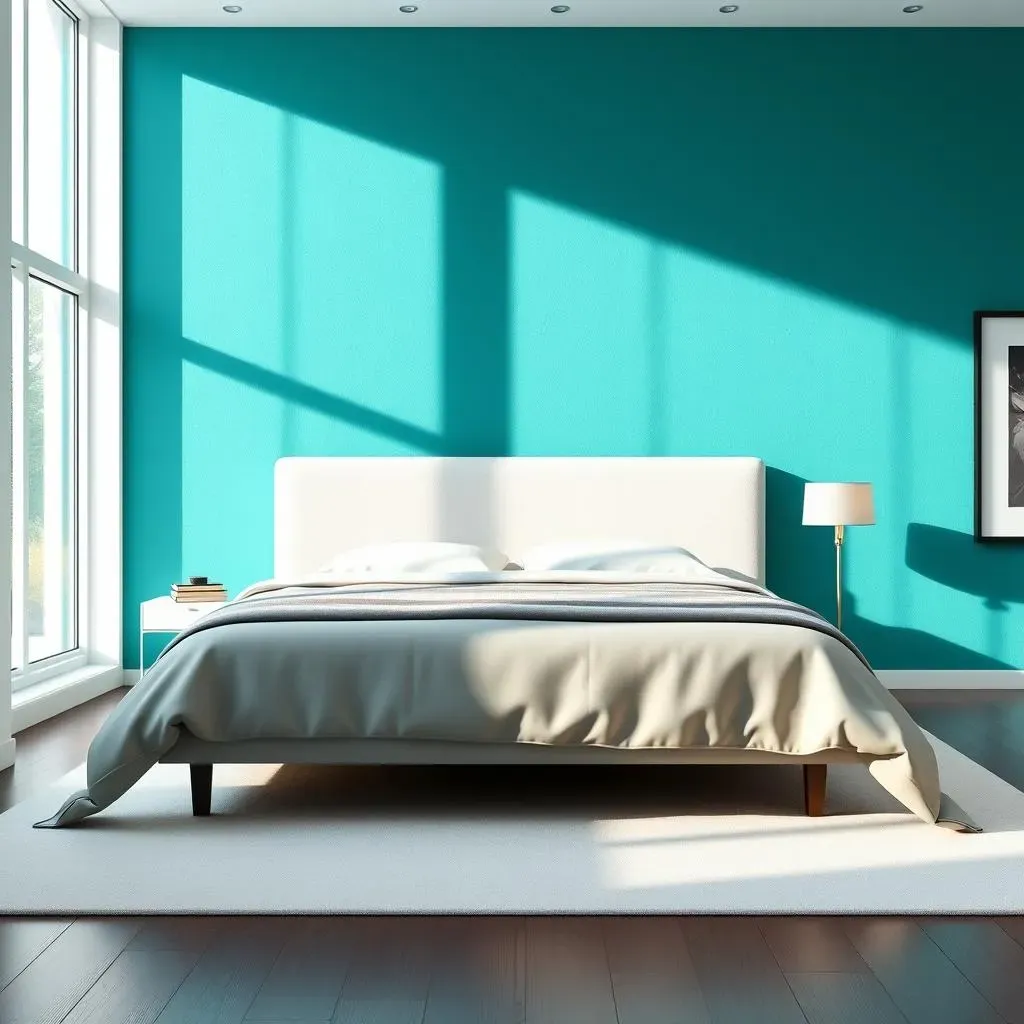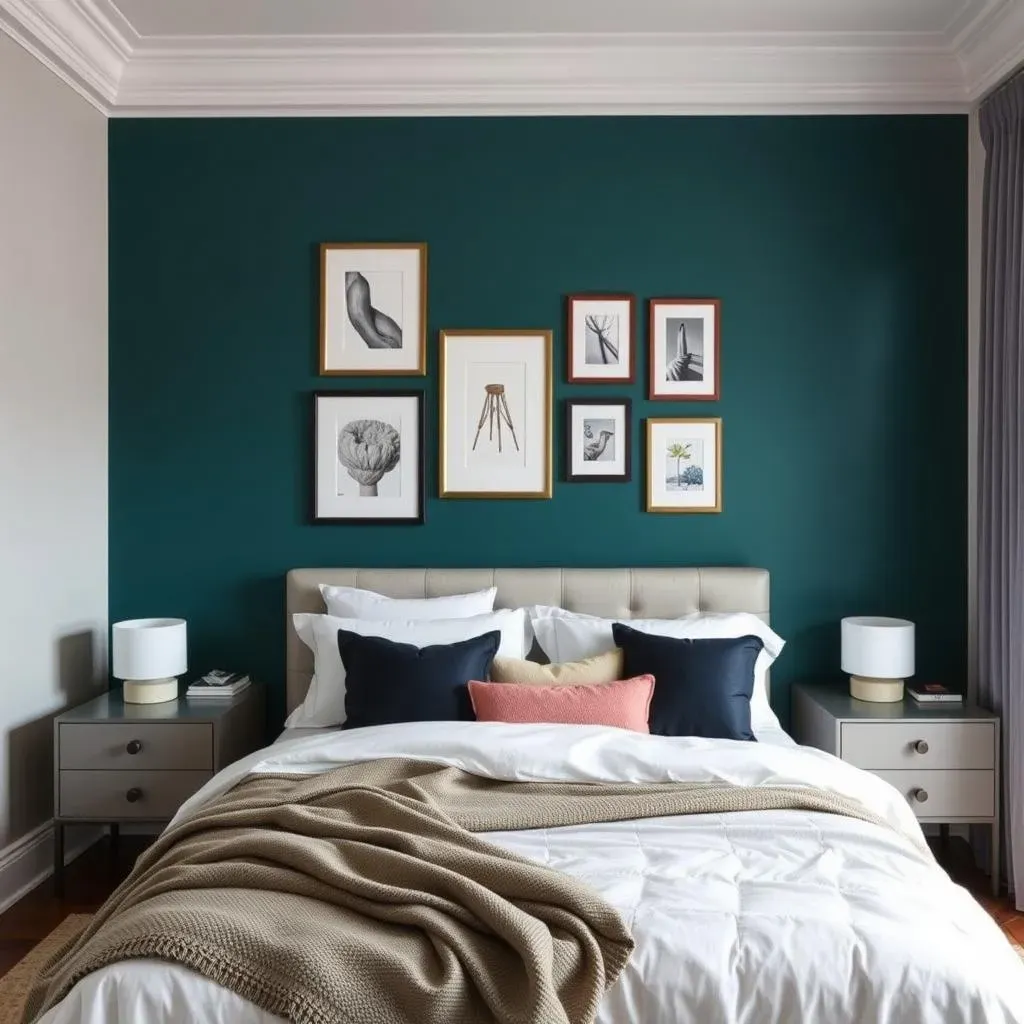Table of Contents
Dreaming of adding a splash of personality to your bedroom? An accent wall might be just what you need. But before you grab a paintbrush or start browsing wallpaper, a crucial question arises: where should an accent wall go in a bedroom? This isn't just about aesthetics; it's about enhancing the room's proportions, highlighting its best features, and creating a space that truly reflects your style. In this article, we'll explore the secrets to choosing the perfect wall, considering factors like focal points, room size, and existing decor. We'll also dive into styling tips to ensure your accent wall becomes a stunning focal point, not a distracting eyesore. Get ready to transform your bedroom into a stylish sanctuary with the power of a well-placed accent wall!
Understanding the Purpose of an Accent Wall in a Bedroom

Understanding the Purpose of an Accent Wall in a Bedroom
More than just a design trend, an accent wall serves a specific purpose in a bedroom. It's a strategic tool to draw the eye, create depth, and highlight architectural features. Think of it as a way to tell a story within your space. It can define the room's focal point, whether it's the headboard of your bed, a striking window, or a unique fireplace. An accent wall also allows you to experiment with bold colors, patterns, or textures without overwhelming the entire room. It’s a commitment-light way to test out a new design direction. Ultimately, understanding the purpose of an accent wall is about recognizing its potential to transform your bedroom from a simple sleeping space into a personalized retreat.
Key Factors to Consider When Choosing a Bedroom Accent Wall

Key Factors to Consider When Choosing a Bedroom Accent Wall
Focal Point and Room Layout
First, consider the natural focal point of your bedroom. Is it the wall behind your bed? Or perhaps a wall with a large window offering a stunning view? The accent wall should enhance this existing feature, not compete with it. Think about the room's layout. A long, narrow room might benefit from an accent wall on the shorter end to visually shorten the space. A square room offers more flexibility, but you'll still want to choose a wall that naturally draws the eye.
Also, think about the flow of traffic. You don't want to create an accent wall that feels cramped or obstructs movement. Walk through your bedroom and pay attention to where your eyes naturally land. That's a good starting point for identifying potential accent wall locations.
Color Harmony and Room Size
Next up, color! The color of your accent wall needs to play nicely with the existing colors in your bedroom. It doesn't have to be an exact match, but it should complement the overall palette. Consider the undertones of your existing furniture, bedding, and wall colors. A warm-toned room might benefit from a rich, earthy accent color, while a cool-toned room could handle a bolder, more vibrant hue.
Don't forget about the size of your bedroom. A dark, intense accent color can make a small room feel even smaller. If you're working with limited space, opt for lighter, more muted tones or consider using texture instead of color to create visual interest. A textured accent wall, like wood paneling or brick, can add depth without overwhelming the space.
Factor | Consideration |
|---|---|
Focal Point | Enhance existing features like the bed or a window. |
Room Layout | Use the wall to visually adjust the room's proportions. |
Color Harmony | Choose a color that complements the existing palette. |
Room Size | Opt for lighter tones in smaller rooms. |
Styling Tips for a Stunning Bedroom Accent Wall

Styling Tips for a Stunning Bedroom Accent Wall
Alright, you've picked the perfect wall, now let's talk styling! This is where the magic happens. It's not just about slapping on some paint; it's about creating a cohesive and visually appealing space. Think about how the accent wall will interact with the rest of your bedroom decor. Does it complement your bedding? Does it enhance your furniture? Does it create the mood you're going for?
One of the easiest ways to create a cohesive look is to pull colors from the accent wall and incorporate them into other elements of the room. For example, if you've chosen a deep blue accent wall, consider adding blue throw pillows, a blue rug, or blue artwork. This will tie the whole room together and make the accent wall feel like a natural part of the space.
Texture is your friend! Don't be afraid to experiment with different textures to add depth and visual interest to your accent wall. Wallpaper is an obvious choice, but there are tons of other options to consider. Wood paneling, brick, stone, and even fabric can all be used to create a unique and eye-catching accent wall.
When choosing textures, think about the overall style of your bedroom. A rustic bedroom might benefit from a wood panel accent wall, while a modern bedroom could handle a sleek, minimalist brick wall. If you're feeling adventurous, you could even try creating a DIY textured accent wall using materials like plaster or joint compound.
- Mirrors: To amplify light and space.
- Artwork: To add personality and visual interest.
- Shelving: To display your favorite books and decorative items.
Creating Your Perfect Bedroom Oasis
Ultimately, deciding where to place an accent wall in your bedroom comes down to understanding your space and your personal style. By considering the room's natural focal points, architectural features, and the existing color palette, you can create a stunning visual impact. Don't be afraid to experiment with colors, textures, and patterns to truly personalize your space. A well-executed accent wall can transform your bedroom into a stylish and inviting sanctuary, reflecting your unique taste and creating a space you'll love for years to come.
